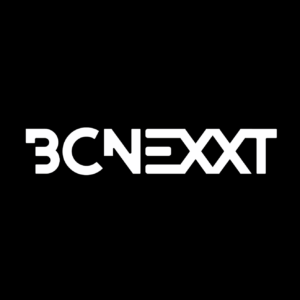With the uncertainty of today’s world, we recognize the need to be able to move swiftly between in-person and remote, learning modes. This is true at every level of education: from elementary to university to corporate. How have institutions managed this new reality, and has this become the new normal? What can organizations and individuals do to make remote learning and presentations more effective?
What we learned in 2020
When lockdowns and social distancing were mandated in many countries in 2020, the world was taken by surprise. In many locations, even the basic requirements to move to remote learning were not in place. These regulations, in fact, presented educational institutions with many problems. In schools, universities and corporations, people come together in often small rooms.
When learning institutions were forced to close, it was obvious that this was only a temporary and somewhat unpopular decision. Students had to continue classes to not miss a complete semester or even year. Many schools and universities quickly switched to remote learning models. Of course, this caused a whole new list of problems on both the instructors’ as well as the students’ side.
Setting up the infrastructure for remote education
While in some locations electronic and remote education are a given, many rural areas, cities and countries did not have the appropriate infrastructure to meet the expectations of those clamoring to continue their education.
For example, in my homeland of Germany, many schools didn’t and still don’t have fast internet. And the same is true for the homes of many students who need to join the lessons from home. Moreover, not every pupil has access to a laptop or tablet. For university students, proper internet speed looks slightly better, depending on the area they live in. The German government tried at least to support families that do not have a proper device for remote learning at home by getting these students a laptop or tablet. But without the persistent efforts of private organizations, this would not have been a success. Setting up these devices was another big task, because not all schools and universities have proper IT departments or instructors that can help their students with this. In the end, this was managed successfully. But this was only the learners’ side of the story. What about the instructors?
Remote production from home
I am pretty sure that few teachers or tutors only had the corresponding hardware, such as laptop or desktop PC, microphone, camera, etc., at home for streaming live learning sessions. Even many schools were not properly equipped with hardware capable of doing that. At universities, it was slightly better, but the existing supply and budget for such technical equipment might be limited. A separate production control room is an exception rather than the rule.
However, hardware is only one part of the story! You also need proper software that can do live production—that is, capture the camera live feed, process the video and stream it to the students wherever they are located.
Can MainConcept Live Encoder help?
MainConcept Live Encoder is the perfect tool for live production and remote teaching. Plus, it does not require a complex computer or laptop setup—only the standard system available from any retailer. Even better, it can be configured with just a few simple steps and does not require you to be an IT expert! Today Live Encoder is used for medical training, university class sessions, and by instructors at home that do live broadcasting to students at all levels—from elementary to university to corporate.
MainConcept Live Encoder setup
MainConcept Live Encoder can receive a live feed from an IP camera supporting various network protocols like RTSP, UDP and RTMP, and via SDI when a supported board is plugged into the computer. It can encode into AVC/H.264 video and AAC audio, i.e., formats that can be played back by any device and player available on the market. If you want to save bandwidth, you can even use HEVC/H.265 video which offers a higher compression efficiency but requires a more powerful system. MainConcept Live Encoder also supports hardware encoding powered by NVIDIA NVENC or Intel Quick Sync Video, allowing the GPU to handle more of the processing load. For streaming classroom instruction to students, you don’t need to support processing into 8K or even 4K resolutions (although both are supported by MainConcept Live Encoder). Considering the bandwidth and hardware limits at home, 720p (1280×720) or 1080p (1920×1080) are sufficient.
On the output side, MainConcept Live Encoder offers exceptional flexibility. It can stream not only RTMP, HTTP or UDP but also into adaptive streaming formats like Apple HLS and MPEG-DASH, which can be received and played back by almost every computer and tablet in use today. The huge benefit in e-learning is that you do not need many separate quality layers for each session, which would require a larger number of more powerful encoding systems. You even have the option to create an archiving file that can be used for VOD purposes later, so students can watch the training again offline if they miss the session or need to refresh their memory on a topic.
Try the MainConcept Live Encoder
Request your free evaluation copy of MainConcept Live Encoder today and discover how it can elevate the e-learning and remote training experience for your end-users. Although more and more students are heading back to school and university, educational institutions are expected to continue expanding remote learning opportunities. Make sure you are ready for whatever the future holds with the right solution from MainConcept!

FRANK SCHÖNBERGER
Frank Schönberger has been with MainConcept for two decades focused primarily on product management. With deep knowledge of customer requirements and engineering methodology, he is dedicated to collaborating effectively across Sales, Marketing, Product Management and Engineering to ensure MainConcept brings users the technology they need to achieve their vision. A graduate of RWTH Aachen University, Frank studied languages, teaching, history, and politics.









